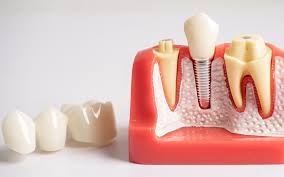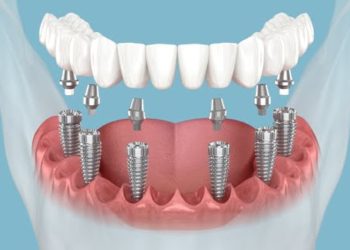Introduction
Dental implants have changed the way people think about restoring missing teeth. They’re not just replacements—they’re long-term solutions that offer the look, feel, and function of natural teeth. But as seamless as the end result may appear, getting there involves a series of well-planned steps.
For many people, uncertainty about the process itself can be a barrier. How long does it take? Is it painful? What happens after the surgery? If you’ve been asking yourself these questions, this article is for you.
Here’s a detailed breakdown of the complete dental implant journey—from your first consultation to the day you smile confidently with your new tooth in place.
Step 1: The Initial Consultation
Your dental implant experience begins with a consultation. This isn’t just a quick look inside your mouth—it’s a comprehensive evaluation of your dental health, medical history, and goals.
During this visit, the provider will:
- Examine your teeth and gums
- Take 3D images or digital scans of your jaw
- Review any current or past oral health issues
- Ask about medications, lifestyle habits, and general health
This step helps determine whether you’re ready for implants right away or if preparatory treatments (such as bone grafts or extractions) are needed first.
Working with a qualified dental implant center ensures this assessment is both thorough and personalized. It sets the stage for a well-planned and predictable outcome.
Step 2: Treatment Planning
Once you’re approved for implants, a custom plan is developed. This outlines:
- The number of implants needed
- Implant type and placement strategy
- Timing for each stage of treatment
- Any additional procedures required (like bone augmentation)
Every mouth is different, which is why cookie-cutter solutions rarely work for implants. Planning ensures the placement supports both function and aesthetics, whether you’re replacing one tooth, several, or an entire arch.
At this point, you’ll also receive an estimated timeline and a discussion of financing options, so you know what to expect moving forward.
Step 3: Tooth Extraction or Bone Grafting (If Needed)
Not everyone starts their journey with a clean slate. Some patients may have:
- Broken or decayed teeth that need removal
- Bone loss in the jaw from long-term tooth absence
- Gum issues that need to be addressed
Extractions are straightforward and often done under local anesthesia. Bone grafting, when needed, involves placing a small amount of grafting material to rebuild lost jawbone volume.
This stage may extend the overall treatment timeline by a few months, as healing is essential before implant placement. However, it dramatically improves the success and longevity of the implant.
Step 4: Implant Placement Surgery
This is the surgical phase—the step that most people picture when they think of dental implants. Using precision-guided tools and techniques, your provider places a small titanium post into your jawbone, where it will eventually fuse with the bone.
Here’s what to expect:
- Local anesthesia to numb the area
- A small incision in the gum tissue
- Precise drilling and placement of the implant post
- Closure of the gum over the site
In most cases, the entire procedure takes about an hour per implant. Discomfort is generally mild and managed with over-the-counter medication.
Once placed, the real magic begins—osseointegration.
Step 5: Healing and Osseointegration
After surgery, the implant must integrate with your jawbone. This process, called osseointegration, usually takes 3 to 6 months.
During this time:
- The bone grows around the implant, securing it in place
- The gum tissue heals and forms a healthy seal around the implant
- Temporary restorations may be provided for appearance or function
Healing is mostly uneventful, but it’s crucial to avoid tobacco use, follow cleaning instructions, and attend checkups. Your dentist will monitor your progress and clear you for the next stage once the implant is fully stable.
Step 6: Abutment Placement
Once osseointegration is complete, a small connector piece called an abutment is attached to the implant. This part extends above the gum line and supports the crown (your visible tooth).
Abutment placement is a minor outpatient procedure that typically requires:
- Reopening the gum slightly (if it has fully healed over the implant)
- Attaching the abutment with a small screw
- Allowing the soft tissue to heal around the new shape
In some treatment plans, abutments are placed during the initial surgery—but most often, this is a separate step for optimal tissue management.
Step 7: Custom Crown Placement
Now comes the moment patients look forward to the most—the final restoration. A custom-made crown is crafted to match the shape, color, and alignment of your natural teeth.
It may be made from porcelain, zirconia, or another durable material. Once complete, your dentist:
- Checks the crown for proper fit and bite alignment
- Bonds or screws it into place on the abutment
- Polishes the crown for a natural finish
The result? A new tooth that looks and functions just like the real thing.
Step 8: Maintenance and Follow-Up
With your new implant in place, the journey continues through maintenance. Dental implants are built to last—but only with proper care.
To protect your investment:
- Brush and floss daily, just like natural teeth
- Avoid using your teeth as tools or biting hard objects
- Attend routine cleanings and exams
- Notify your dentist of any changes or discomfort
Implants don’t decay, but the surrounding tissue can still develop issues if neglected. Ongoing care is essential to long-term success.
The team at Center For Implant Dentistry emphasizes this final step as a critical part of every treatment plan—because long-lasting results depend on it.
Final Thoughts
From consultation to confident smile, getting a dental implant is a process that combines science, precision, and patience. Each step is designed to support the next—ensuring your final restoration is strong, stable, and indistinguishable from your natural teeth.
Knowing what to expect makes the journey less intimidating and more empowering. With the right provider and a clear roadmap, you’ll not only restore your smile—you’ll rebuild function, confidence, and peace of mind.













































































